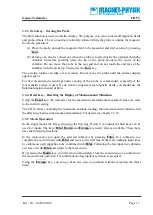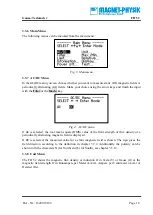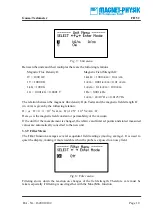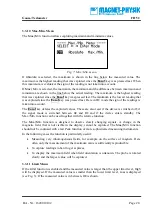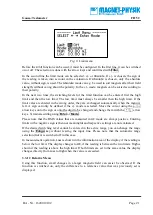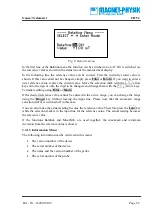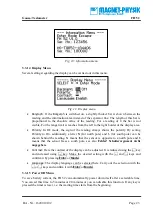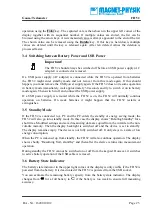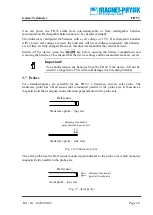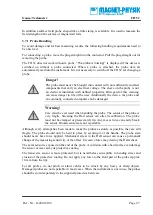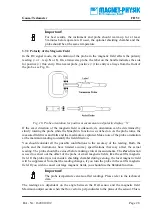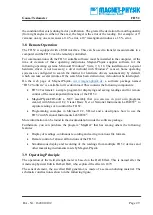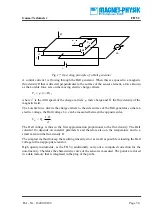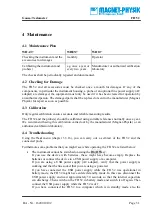
Gauss-/Teslameter
FH 52
BA - Nr.: 1620010102
Page 16
←
,
→
,
↑
,
↓
The arrow keys are used to move the selection mark. The selection is shown
inverted.
Escape
This key is used to cancel an input and to return to the previously set values.
Using the
Range
,
Zero
and
Reset
keys, frequently used functions are carried out immediately.
Range
Pressing this key multiple times allows switching between the available
measuring ranges and the automatic range selection (Auto).
Zero
Starts the automatic zero adjustment.
Reset
Resets the stored maximum and minimum values.
3.3
Functions
3.3.1
On/Off Key – Switching the Device On and Off
Press the
On/Off
key to switch on the instrument. First the logo of Magnet-Physik and the
device name are shown. Then the device returns to the state it was in before being turned off.
The device cannot be switched off again until the logo has disappeared.
To switch off the device, press the
On/Off
key again. Before the device powers down, all
eventually changed settings and changes to the measured data memory are copied from the
volatile to the no-volatile memory. Therefore you should always switch off the device using the
On/Off
key. If the device does not contain operational batteries and the USB cable is removed
while the device is on, settings or measured data can be lost.
Settings and changes to the measured data memory are also copied from the volatile to the no-
volatile memory when the device enters the standby mode (chapter 3.3.17).
3.3.2
Range Key – Range Selection
Pressing this key multiple times allows switching between the available measuring ranges and
the automatic range selection (
Auto
). The available measuring ranges depend on the selected
unit and are given in the following table.
Table 3: Ranges
20 mT
200 G
16 kA/m
160 A/cm
200 Oe
200 mT
2 kG
160 kA/m
1600 A/cm
2 kOe
2 T
20 kG
1600 kA/m
1.6 kA/cm
20 kOe
In
Auto
mode, the FH 52 automatically selects the range with the best resolution for the value
to be measured. It can take about 1 second until the range is set. Besides the device switches
already at 90 % of the upper range limit into the next higher range and it returns at 7 % of the
upper range limit into the next lower range. So manual ranging might work better under some
conditions, especially if the reading is close to the upper range limit.
















